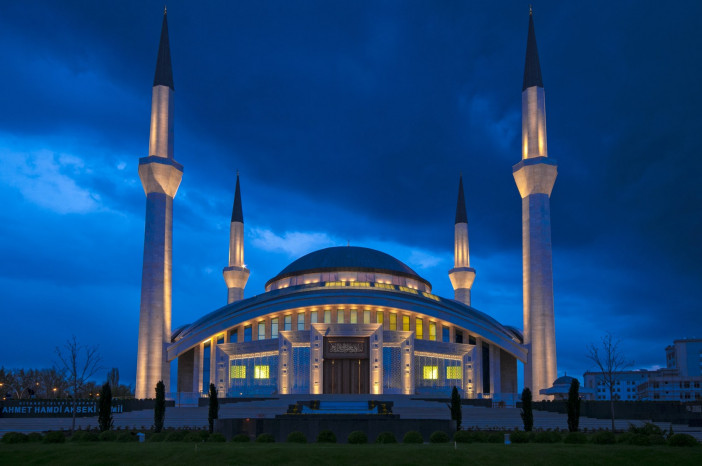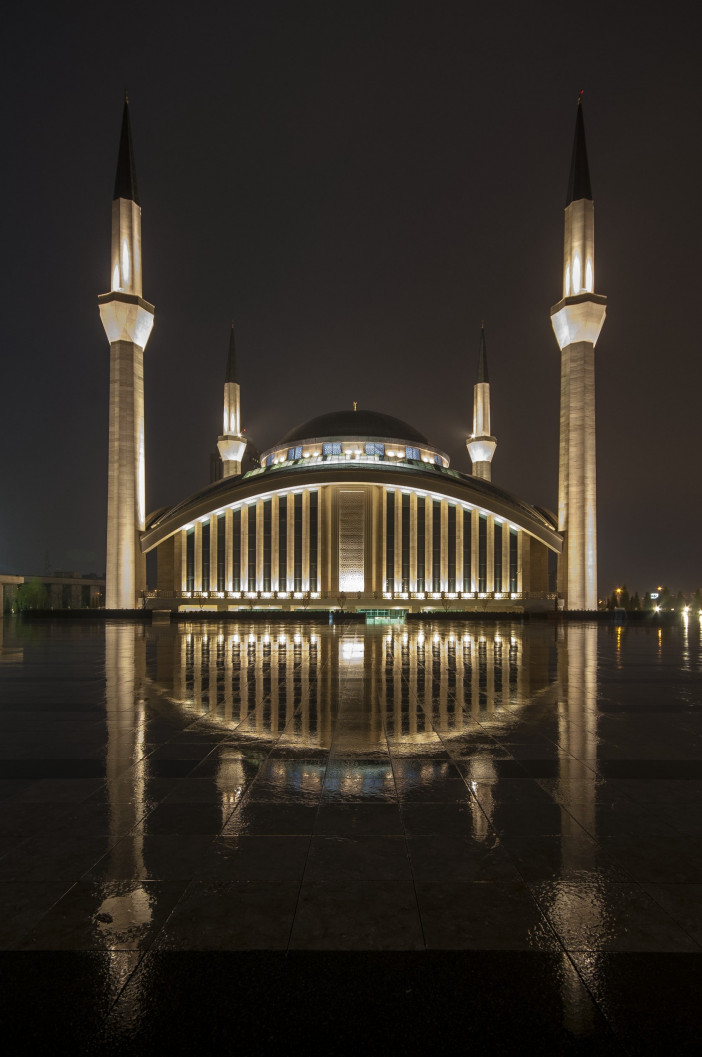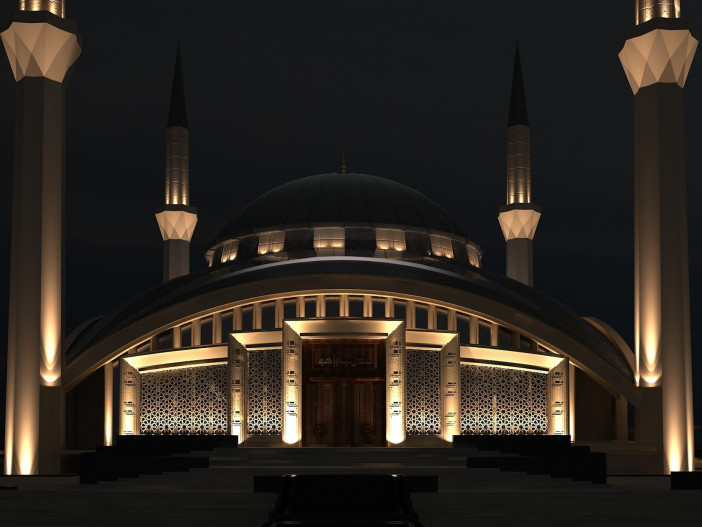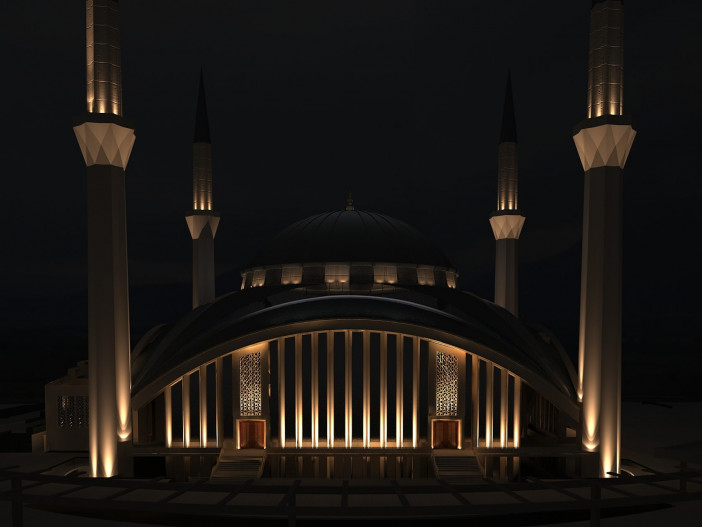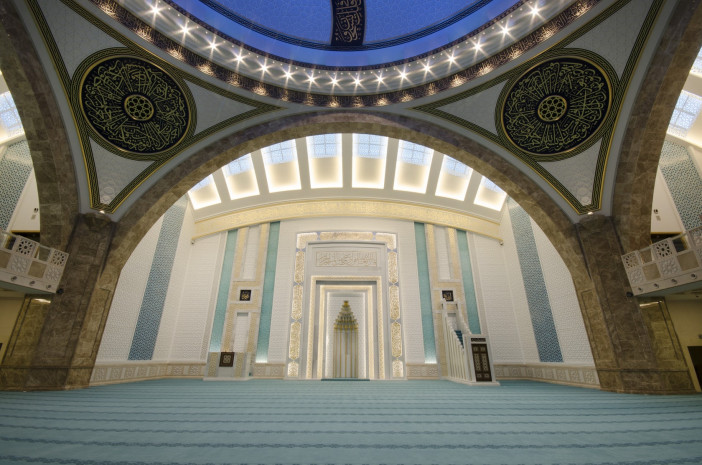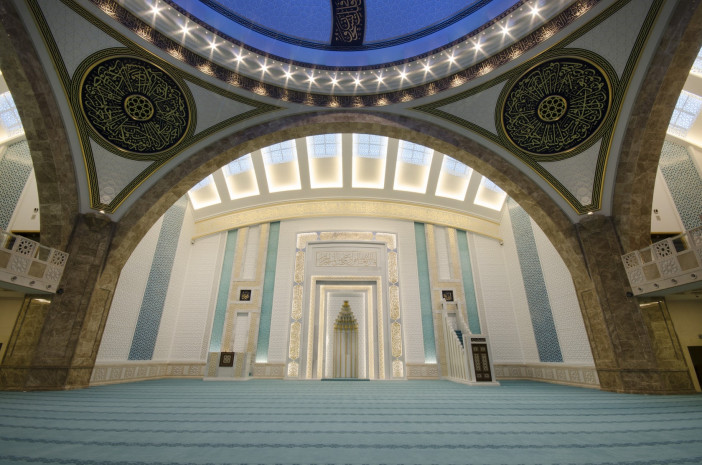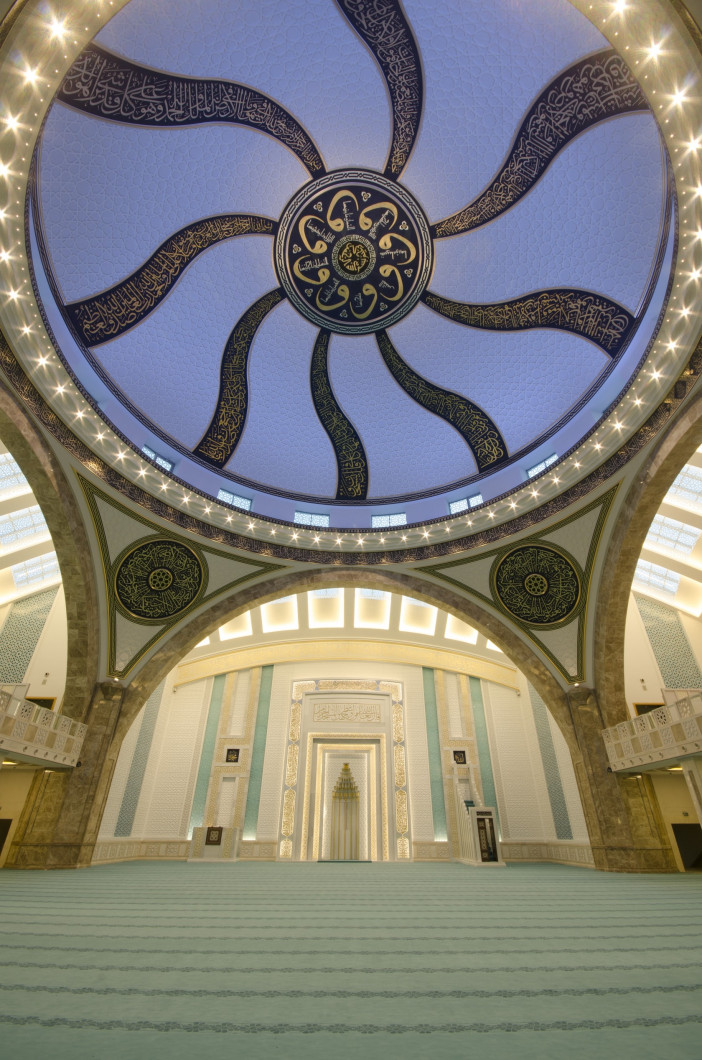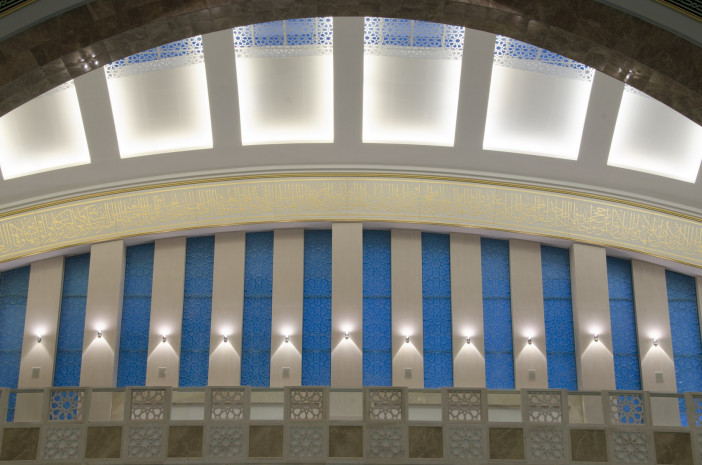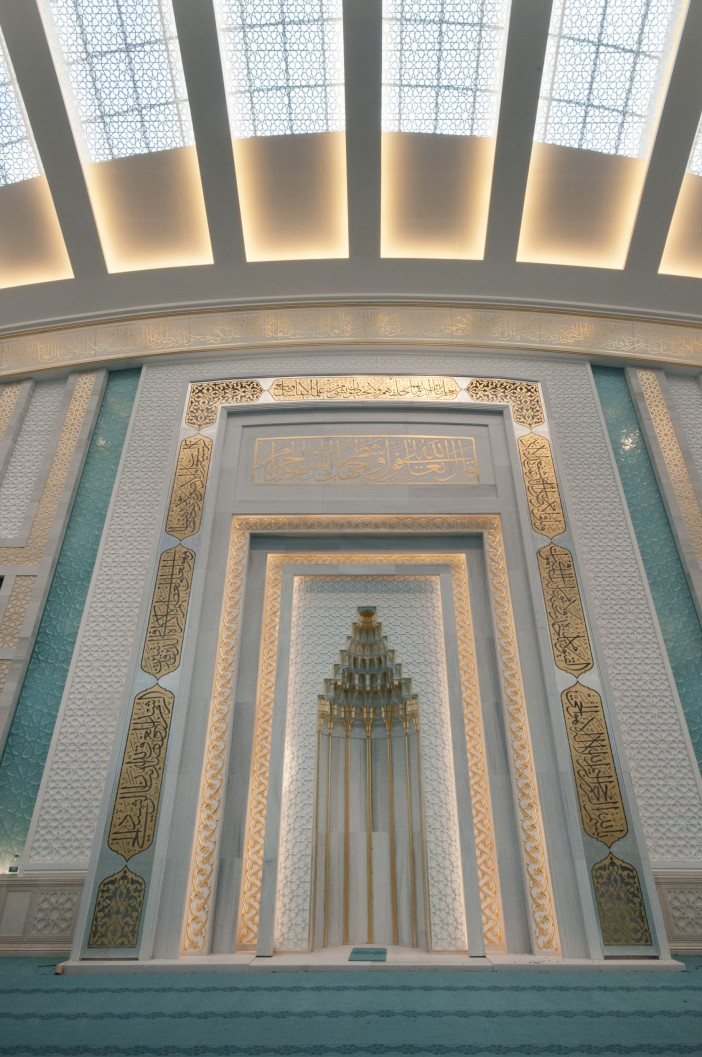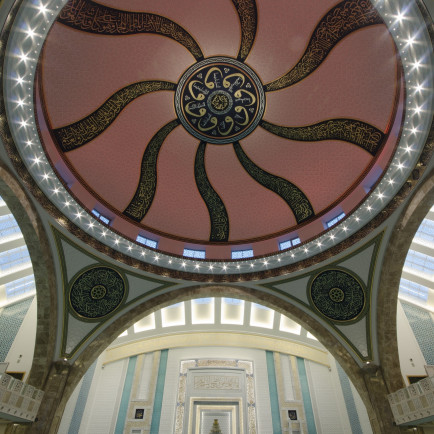Ahmet Hamdi Akseki Mosque
History
Description
Designed in a Neoclassical Style, the mosque has a main dome of 33m diameter, four minarets of 66m height and the total closed area of 80.000m2. One of the most important symbols of the Anatolian Seljuk State (1075-1308), the Seljuk-star-pattern, is used in various places throughout the structure such as cross sections of minarets.
The design approach in facade lighting was to create an icon for the city of Ankara.On the way to this goal, the design team wanted to enhance the perception of the architecture and to define the structure. While the main architectural elements were highlighted, shadows were planned to support it. To achieve the desired lighting effect, lighting fixtures in different watt ages and various optics were used. However, in order to ensure positive result in practice, the design team created detailed 3D modelling of the mosque and got many photo realistic renderings from different view angles.
Long distance light throws from minarets were aimed on the main dome to create a moonlight effect. Narrow beams on minarets were planned so as to accent the star-shaped cross sections of minarets with smooth degrading-light-effect along the body and to highlight balconies.
Lighting the main facade,two opposing lighting strategies were used to break the routine; while the columns were accented from front, the big start-patterned daylight apertures were accented from back by leaving the patterns in dark and emphasizing the horizontal structures of the building.
The V-shaped consecutive columns continuing on all facades were planned to lit with decreasing light effect while accentuating the bow-shaped structure.
The approach to interior lighting
was to create a simple, calm and peaceful environment.Daylight and artificial
lighting were designed in combination. Contrary to what is usually encountered,
no chandelier was used in the design. The prayer areas were lit evenly by
double-focus down lights placed around the dome. Indirect lighting was used both
in horizontal and vertical planes in order to enhance the architecture and
create calmness. The dome was homogenously lighted with RBG fixtures in order
to have flexibility choosing the color but the center-piece was accented with
narrow-beam projectors from four vaults. The appliques on the walls were used
to contribute to overall perception of the interior.
Details
Location
Üniversiteler Mh., 06800 چانکایا، انقرہ/صوبہ انقرہ، تركيا
Architect Name
Year of Build
2014
Area
2322 Sqm
Drawings
Map
History
Description
Designed in a Neoclassical Style, the mosque has a main dome of 33m diameter, four minarets of 66m height and the total closed area of 80.000m2. One of the most important symbols of the Anatolian Seljuk State (1075-1308), the Seljuk-star-pattern, is used in various places throughout the structure such as cross sections of minarets.
The design approach in facade lighting was to create an icon for the city of Ankara.On the way to this goal, the design team wanted to enhance the perception of the architecture and to define the structure. While the main architectural elements were highlighted, shadows were planned to support it. To achieve the desired lighting effect, lighting fixtures in different watt ages and various optics were used. However, in order to ensure positive result in practice, the design team created detailed 3D modelling of the mosque and got many photo realistic renderings from different view angles.
Long distance light throws from minarets were aimed on the main dome to create a moonlight effect. Narrow beams on minarets were planned so as to accent the star-shaped cross sections of minarets with smooth degrading-light-effect along the body and to highlight balconies.
Lighting the main facade,two opposing lighting strategies were used to break the routine; while the columns were accented from front, the big start-patterned daylight apertures were accented from back by leaving the patterns in dark and emphasizing the horizontal structures of the building.
The V-shaped consecutive columns continuing on all facades were planned to lit with decreasing light effect while accentuating the bow-shaped structure.
The approach to interior lighting
was to create a simple, calm and peaceful environment.Daylight and artificial
lighting were designed in combination. Contrary to what is usually encountered,
no chandelier was used in the design. The prayer areas were lit evenly by
double-focus down lights placed around the dome. Indirect lighting was used both
in horizontal and vertical planes in order to enhance the architecture and
create calmness. The dome was homogenously lighted with RBG fixtures in order
to have flexibility choosing the color but the center-piece was accented with
narrow-beam projectors from four vaults. The appliques on the walls were used
to contribute to overall perception of the interior.


